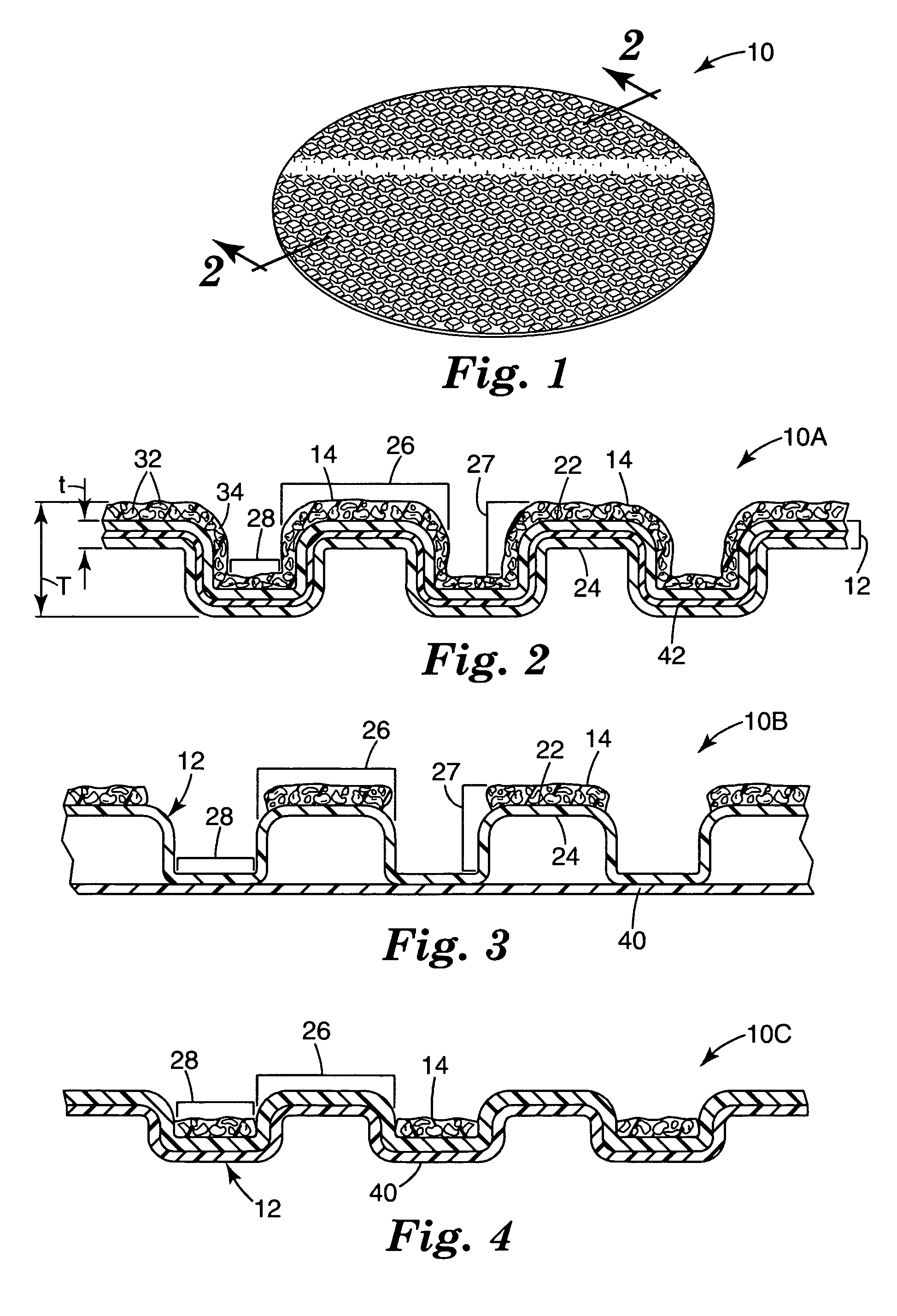Nonwoven abrasive articles and methods
a technology of abrasives and nonwoven materials, applied in the field of textured abrasives, can solve the problems of low grinding characteristics, and achieve the effect of improving cutting performan
- Summary
- Abstract
- Description
- Claims
- Application Information
AI Technical Summary
Benefits of technology
Problems solved by technology
Method used
Image
Examples
example 1
[0078]The lofty nonwoven web, described above, was corrugated by a process and equipment similar to that illustrated in FIG. 9 except that the first and second intermeshing patterned rollers (corrugating members 126 and 127, respectively) were machined with a diamond pattern. The diamonds were approximately 8 mm per side and there were approximately 9 diamonds per square inch (6.45 cm2) with a space between each diamond. Both pattern rolls were heated to 232° C. The lofty nonwoven web was fed into the nip between the intermeshing patterned rollers such that the web first major surface was up. The resulting patterned nonwoven web had depressed regions or pockets on the first major surface of the web. Each pocket was about 3 mm deep.
[0079]An abrasive coating was applied to the first major surface of this patterned web.
[0080]The surface of the web was spray coated at a line speed of 5 feet / min. (1.5 m / min) with a resin / abrasive slurry using a spray gun (“BINKS SPRAY GUN #601”) equipped...
example 2
[0086]Example 2 was prepared according to the procedure described in Example 1 except that the nonwoven web was turned over such that the first major surface was facing down as it was fed into the nip between the intermeshing patterned rollers. The resultant patterned nonwoven web was shaped such that there were raised portions or peaks formed on the first major surface. Each raised portion was about 3 mm high.
[0087]All subsequent coating operations were the same as outlined in Example 1.
[0088]The finished coated abrasive article of Example 2 resembled the abrasive article shown in FIG. 6, having individual peaks.
example 3
[0089]Example 3 was prepared according to the procedure described in Example 1 except that the intermeshing pattern rollers were heated to 177° C. The resultant nonwoven web had less defined regions or pockets due to less thermoforming of the nonwoven fabric. The formed pocket was about 2-3 mm deep.
[0090]The finished coated abrasive article of Example 3 resembled the abrasive article shown in FIG. 7, having connected peaks.
PUM
| Property | Measurement | Unit |
|---|---|---|
| thickness | aaaaa | aaaaa |
| thickness | aaaaa | aaaaa |
| particle size | aaaaa | aaaaa |
Abstract
Description
Claims
Application Information
 Login to View More
Login to View More - R&D
- Intellectual Property
- Life Sciences
- Materials
- Tech Scout
- Unparalleled Data Quality
- Higher Quality Content
- 60% Fewer Hallucinations
Browse by: Latest US Patents, China's latest patents, Technical Efficacy Thesaurus, Application Domain, Technology Topic, Popular Technical Reports.
© 2025 PatSnap. All rights reserved.Legal|Privacy policy|Modern Slavery Act Transparency Statement|Sitemap|About US| Contact US: help@patsnap.com



